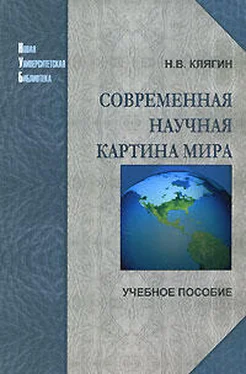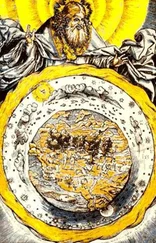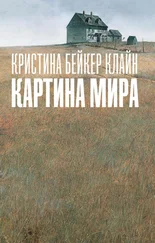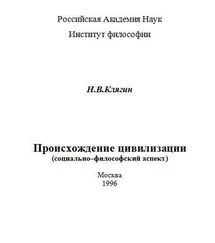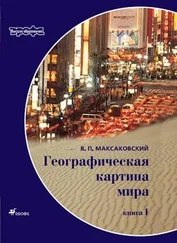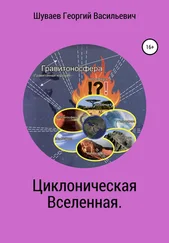333. Frenk C., White S. More missing matter mystery // Nature. 1985. V. 317, № 6039. P. 670–671.
334. Fritzsch B. Inner ear of the coelacanth fish Latimeria has tetrapod affinites // Nature. 1987. V. 327, № 6118. P. 153–154.
335. Fu Y.-X., Li W.-H. Estimating the Age of the Common Ancestor of Men from the ZFY Intron // Science. 1996. V. 272, № 5266. P. 1356–1357.
336. Fukugita M., Hogan C.J., Peebles J.E. The cosmic distance scale and the Hubble constant // Nature. 1993. V. 366, № 6453. P. 309–312.
337. Gabunia L., Vekua A. A Plio-Pleistocene hominid from Dmanisi, East Georgia, Caucasus // Nature. 1995. V. 373, № 6514. P. 509–512.
338. Gabunia L., Vekua A., Lordkipanidze D., Swisher III C.C., Ferring R., Justus A., Nioradze M., Tvalchrelidze M., Ant ô n S.C., Bosinski G., J ö ris O., Lumley M.-A.-de, Majsuradze G., Mouskhelishvili A. Earliest Pleistocene Hominid Cranial Remains from Dmanisi, Republic of Georgia: Taxonomy, Geological Setting, and Age // Science. 2000. V. 288, № 5468. P. 1019–1025.
339. Galtier N., Tourasse N., Gony M. A Nonhyperthermophilic Common Ancestor to Extant Life Forms // Science. 1999. V. 283, № 5399. P. 220–221.
340. Gardner R. A., Gardner B. T. Teaching Sign Language to a Chimpanzee // Science. 1969. V. 165, № 3894. P. 664–672.
341. Gaskell C. M. Direct estimate of Hubble’s constant from the double quasar // Nature. 1985. V. 314, № 6010. P. 402.
342. Gaucher E. A., Thomson J. M., Burgan M. F., Benner S. A. Inferring the palaeoenvironment of ancient bacteria on the basis of resurrected proteins // Nature. 2003. V. 425, № 6955. P. 285–288.
343. Gawiser E., Silk J. Extracting Primordial Density Fluctuations // Science. 1998. V. 280, № 5368. P. 1405–1411.
344. Gebo D. L., MacLatchy L., Kibyo R., Deino A., Kingston J., Pilbeam D. A Ho-minoid Genus from the Early Miocene of Uganda // Science. 1997. V. 276, № 5311. P. 401–404.
345. Gee H., Ahlberg P. E. Four legs to stand on… for Devonian vertebrates // Nature. 1989. V. 342, № 6251. P. 738–739.
346. Gensel P. G., Andrews H. N. The Evolution of Early Land Plants // American Scientist. 1987. V. 75, № 5. P. 478–489.
347. Gersonde R., Kyte F. T., Bleil U., Diekmann B., Flores J.A., Gohl K., Grahl G., Hagen R., Kuhn G., Sierro F. J., V ö lker D., Abelmann A., Bostwick J. A. Geological record and reconstruction of the late Pliocene impact of the Eltanin asteroid in the Southern Ocean // Nature. 1997. V. 390, № 6658. P. 357–363.
348. Gibbons A. Chimps: More Diverse Than a Barrel of Monkeys // Scitnce. 1992. V. 255, № 5042. P. 287–288.
349. Gibbons A. Paleoanthropologists Launch A Society of Their Own // Science. 1992. V. 256, № 5061. P. 1281–1282.
350. Gibbohs A. New Study Points to Eurasian Ape as Great Ape Ancestor // Science. 1998. V. 281, № 5377. P. 622–623.
351. Gibbons G. Quantum gravity: the last frontier // New scientist. 1985. V. 108, № 1480. P. 45–47.
352. Gibert J., Sanchez F., Ribot F., Gibert L., Ferrandez C., Iglesias A., Gibert P., Gonz á lez F. Restes humains dans les sédiments du Pléistocène inférieur de la région d’Orce et de Cueva Victoria (sud-est de l’Espagne) // L’anthropologie. 2002. V. 106, № 5. P. 669–683.
353. Gilbert W. The RNA world // Nature. 1986. V. 319, № 6055. P. 618.
354. Gingerich P. D., Haq M., Zalmout I. S., Khan I. H., Malkani M. S. Origin of Whales from Early Artiodactyls: Hands and Feet of Eocene Protocetidae from Pakistan // Science. 2001. V. 293, № 5538. P. 2239–2242.
355. Giovanelli R. Less expansion, more agreement // Nature. 1999. V. 400, № 6740. P. 111–112.
356. Glanz J. New Light on Fate of the Universe // Science. 1997. V. 278, № 5339. P. 799–800.
357. Glanz J. Exploding Stars Point to a Universal Repulsive Force // Science. 1998. V. 279, № 5351. P. 651–652.
358. Glanz J. Astronomers See a Cosmic Antigravity Force at Work // Science. 1998. V. 279, № 5355. P. 1298–1299.
359. Glanz J. No Backing Off From the Accelerating Universe // Science. 1998. V. 282, № 5392. P. 1249–1251.
360. Glanz J. Superheavy Particles From the Big Bang? // Science. 1999. V. 283, № 5405. P. 1095–1096.
361. Glen W. What Killed the Dinosaurs? // American Scientist. 1990. V. 78, № 4. P. 354–370.
362. Goodall J. Continuities between Chimpanzee and Human Behavior // Human Origins. Louis Leakey and the East African Evidence. A Staples Press Book. W.A. Benjamin, Inc., Menlo Park, Ca. – Reading, Mass. – L. – Amsterdam – Don Mills, Ontario – Sydney, 1976. P. 81–95.
363. Goodman B. Phylogeny! Did Bats Evolve Twice? // Science. 1991. V. 253, № 5015. P. 36.
364. Gorina D. P., Vaid J., Bellugi U. The Linguistic Basis of Left Hemisphere Specialization // Science. 1992. V. 255, № 5049. P. 1258–1260.
365. Gostin V. A., Haines P. W., Jenkins R. J. F., Compston W., Williams I. S. Impact Ejecta Horizon Within Late Precambrian Shales, Adelaide Geosyncline, South Australia // Science. 1986. V. 233, № 4760. P. 198–199.
366. Gostin V. A., Keays R. R., Wallace M. W. Iridium anomaly from Acraman impact ejecta horizon: impacts can produce sedimentary iridium peaks // Nature. 1989. V. 340, № 6234. P. 542–544.
366a. Gravina B., Mellars P., Ramsey C. B. Radiocarbon dating of interstratified Neanderthal and early modern human occupations at the Chatelperronian type-site // Nature. 2005. V. 438. № 7064. P. 51–56.
367. Graziosi P. Les industries paléolithiques à dos rabattu et le passage du Paléolithique au Mésolithique en Italie // Bulletin de la Société préhistorique française. 1951. T. 48, № 1–2. P. 55–61.
368. Graziosi P. L’arte preistorica in Italia. Firenze: Sansoni, 1973. 203 P.
369. Green M. B. Unification of forces and particles in superstring theories // Nature. 1985. V. 314, № 6010. P. 409–414.
370. Green M. Superstring Theories in the real world // New scientist. 1985. V. 107, № 1471. P. 35.
371. Gribbin J. In search of the missing mass // New scientist. 1986. V. 109, № 1490. P. 37–40.
372. Gribbin J. The structure of the Universe // New scientist. 1987. V. 116, № 1584. P. 58–62.
373. Gribbin J. An anniversary of some gravity // New scientist. 1987. V. 116, № 1586. P. 44–47.
374. Gribbin J. Famous for 14 minutes, 49 seconds // New scientist. 1993. V. 137, № 1864. P. 41–44.
375. Gribbin J. Is the Universe alive? // New scientist. 1994. V. 141, № 1908. P. 38–40.
376. Gribbin J. The Galaxy’s dark secrets // New scientist. 1994. V. 142, № 1920. P. 26–29.
377. Gribbin J., Wesson P. The fifth dimention of mass // New scientist. 1988. V. 119, № 1631. P. 56–59.
378. Grieve R. A. F. When will enough be enough? // Nature. 1993. V. 363, № 6431. P. 670–671.
379. Griffin A. S., West S. A. Kin Discrimination and the Benefit of Helping in Cooperatively Breeding Vertebrates // Science. 2003. V. 302, № 5645. P. 634–636.
380. Grine F. E., Kay R. F. Early hominid diets from quantitative image analysis of dental microwear // Nature. 1988. V. 333, № 6175. P. 765–768.
381. Grotzinger J. P., Bowring S. A., Saylor B. Z., Kaufman A. J. Biostratigraphic and Geochronologic Constraints on Early Animal Evolution // Science. 1995. V. 270, № 5236. P. 598–604.
382. Groube L., Chappell J., Muke J., Price D. A 40,000 year-old human occupation site at Huon Peninsula, Papua New Guinea // Nature. 1986. V. 324, № 6096. P. 453–455.
383. Groves C. P. A theory of human and primate evolution. Oxford: Clarendon press, 1989. XII. 375 P.
384. Groves C. P., Sabater P.J. From ape’s nest to human fix-point // Man. 1985. V. 20, № 1. P. 22–47.
385. Gruhn R. Linguistic evidence in support of the coastal route of earliest entry into the New World // Man. 1988. V. 23, № 1. P. 77–100.
Читать дальше
